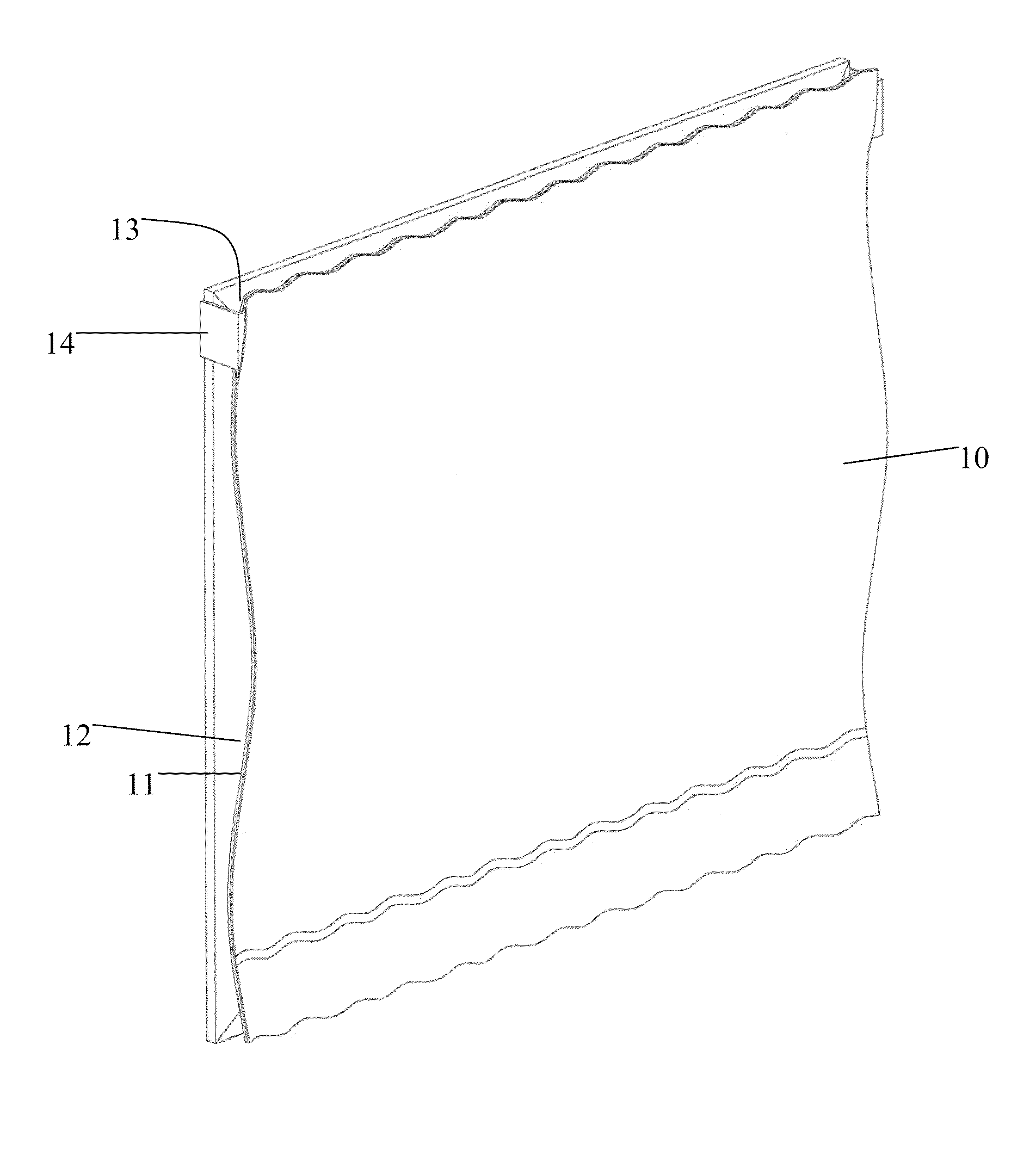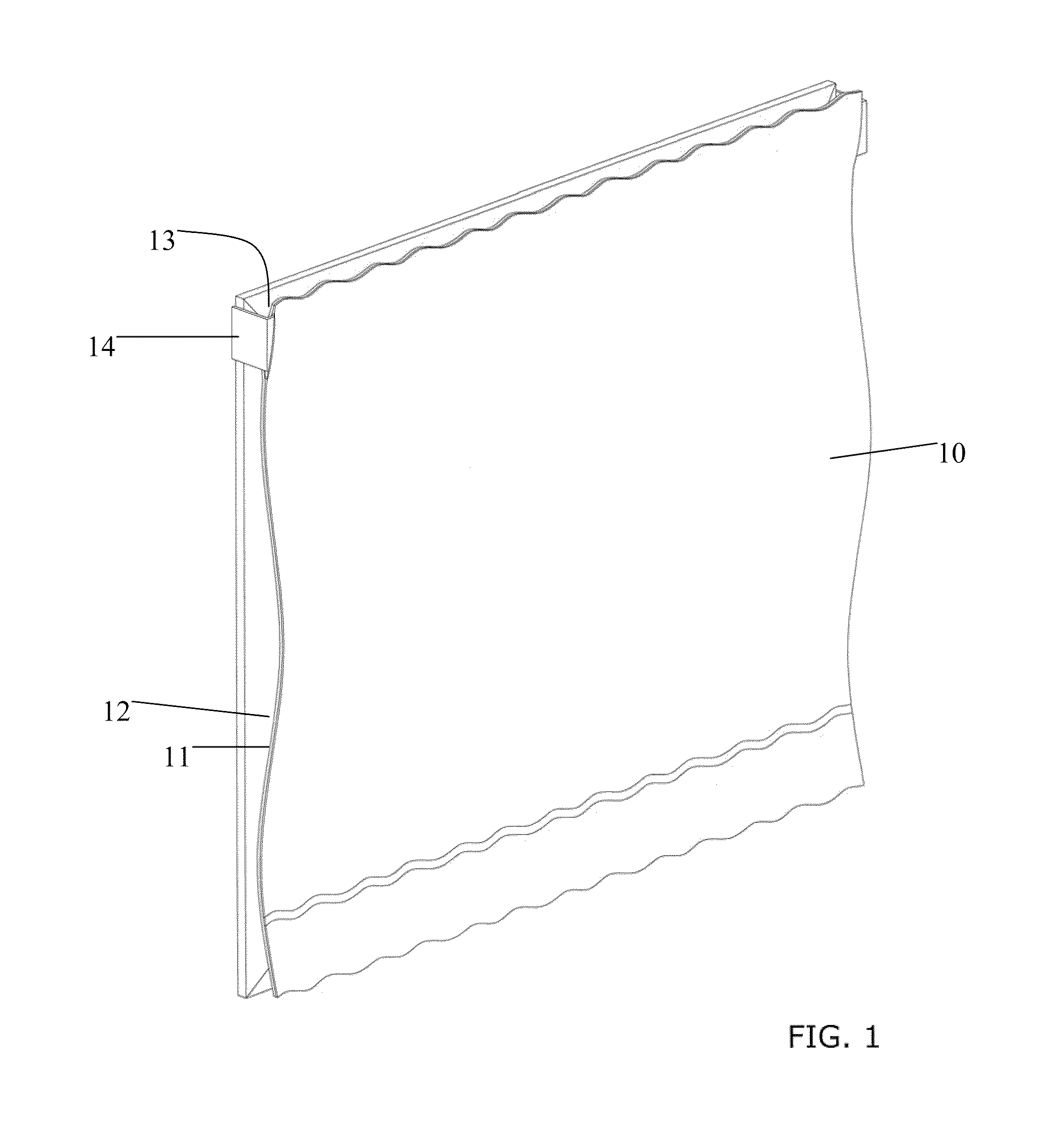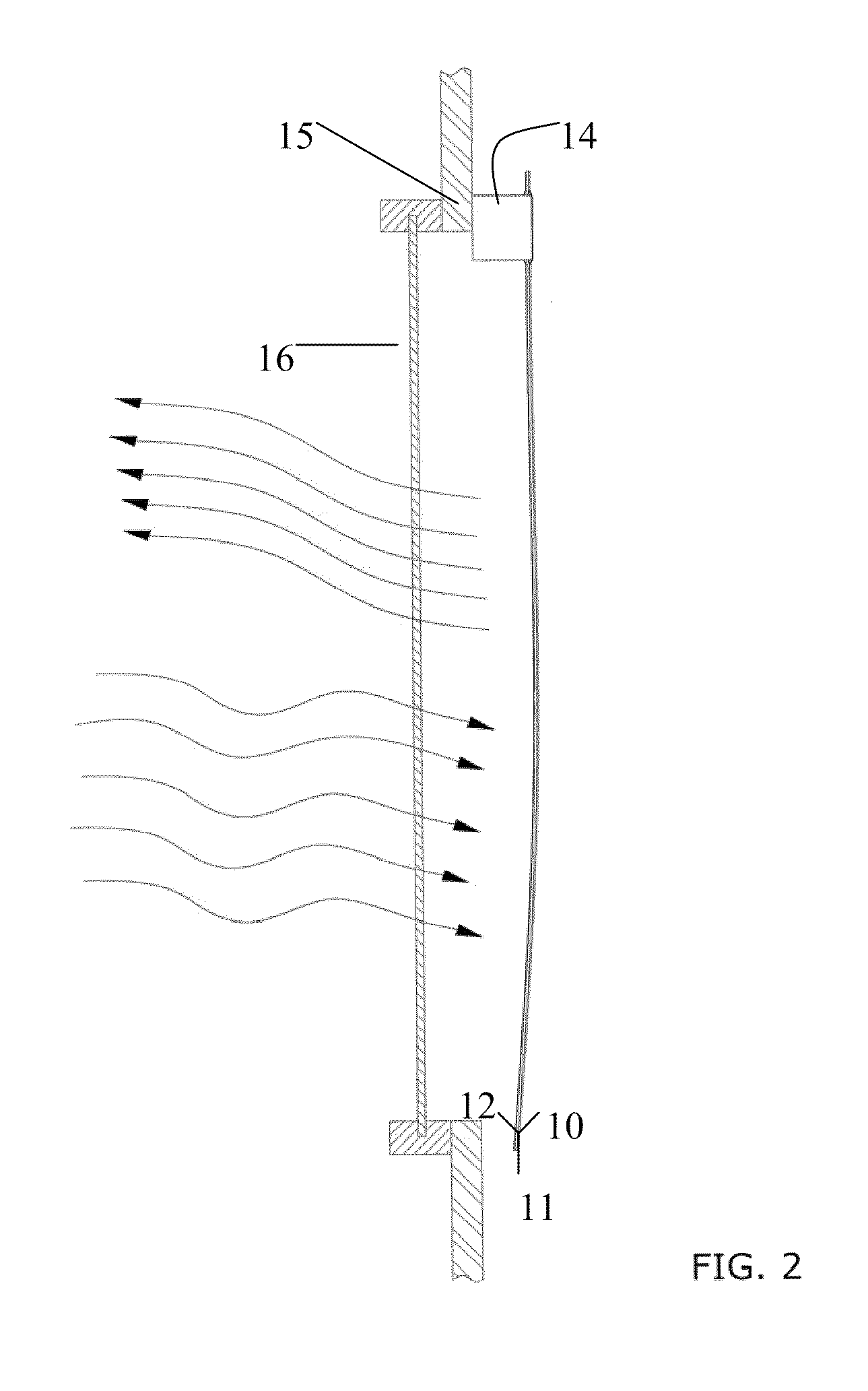Window Covering For Energy Conservation
a technology for windows and windows, applied in the field of windows, can solve the problems of increasing energy consumption, heat loss, energy loss in buildings, etc., and achieve the effects of reducing electricity consumption, reducing electricity demand, and high-quality fenestration properties
- Summary
- Abstract
- Description
- Claims
- Application Information
AI Technical Summary
Benefits of technology
Problems solved by technology
Method used
Image
Examples
Embodiment Construction
[0031]A invention described in detail herein generally relates to a window covering for energy conservation.
[0032]FIG. 1 illustrates a front view of the present invention, hanging from a window. The outer layer 10 of the present invention is visible from the interior of the building. FIG. 3 is a cross-sectional view of the present invention, illustrating the three layers of the window hanging, as in the preferred embodiment. The three layers are an outer layer 10 layer of eco-friendly (or green) fabric, the middle layer 11 is fabricated of metalized polyethylene (PET), and the inner layer 12 is made of a sheer fabric. Each layer of the present invention will be described in turn. Additionally, the term “eco-friendly” is synonymous with the term “green” for the purposes of describing the outer layer 10 of the present invention.
[0033]The eco-friendly fabrics that are used in the outer layer 10 of the present invention are predominantly “green”, meaning they are produced by nature and ...
PUM
 Login to View More
Login to View More Abstract
Description
Claims
Application Information
 Login to View More
Login to View More - R&D
- Intellectual Property
- Life Sciences
- Materials
- Tech Scout
- Unparalleled Data Quality
- Higher Quality Content
- 60% Fewer Hallucinations
Browse by: Latest US Patents, China's latest patents, Technical Efficacy Thesaurus, Application Domain, Technology Topic, Popular Technical Reports.
© 2025 PatSnap. All rights reserved.Legal|Privacy policy|Modern Slavery Act Transparency Statement|Sitemap|About US| Contact US: help@patsnap.com



